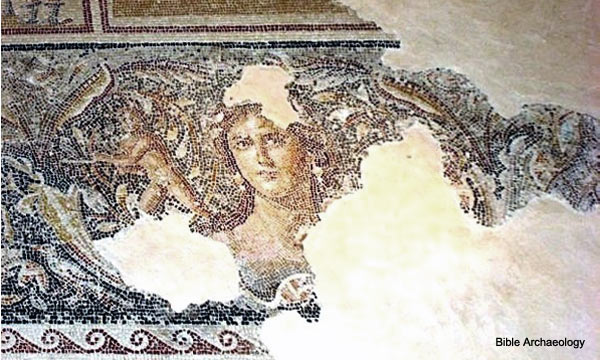Lifestyles of the rich and famous in biblical times
The city of Caesarea, located on the Israeli coastal plain near the city of Hadera, is known for the lavish lifestyle of certain contemporary residents. But it is not just the rich and famous in today’s today that enjoyed such a luxurious lifestyle. As more ancient discoveries are made, archaeologists have begun piecing together the details of how people lived in biblical times, and it was no less extravagant.
Caesarea was built by Herod the Great about 25–13 BCE as the port city Caesarea Maritima. It served as an administrative center of Judaea Province of the Roman Empire, and later the capital of the Byzantine Palaestina Prima province during the classic period, a time when residents engaged in sumptuous eating, drinking, dressing and the housing customs of the wealthy.
The Jewish sages were usually wealthy, which allowed them to ponder the fine points of law all day long – questions such as ‘what does it mean to be rich?’ According to Rabbit Yosi, a rich person was “whoever has a toilet near his table.” At Sepphoris in the Galilee, archaeologists discovered just such a toilet near the dining hall of a wealthy Roman villa.
Roman homes of the wealthy were incredibly spacious and were decorated with mosaics and water features. Sizable homes have been found at Bethsaida; one was complete with a wine cellar, near the Sea of Galilee. The homes of the rural rich had spacious grounds on which were often found an olive press, grape press, and a family tomb.
In ancient times, the domain of wealthy women was in their fine homes. Thus, women looking out of windows became a common motif in ancient literature. Going back to biblical times, David’s wife Michal disparagingly watched him cavort through a window and there is a poignant reference to the mother of Israel’s Canaanite enemy, Sisera, looking in vain for his return from battle through a window lattice.
Servants, of course were also a necessity – some wealthy country landlords could have had at least 50 living on their premises. According to the Mishnah, the more servants a woman had, the less she had to do herself. One servant liberated her from baking, two from cooking and breast-feeding. Four allowed her to “sit all day in a chair.” But even if she had 100 servants, she still was still required to weave, so she would not become “idle,” the sages decreed.
While the poor had to make do with natural earth tones in their clothing, the rich could afford dyed textiles. Purple dye, made from the murex snail, was particularly costly: thus in Roman times, by wearing purple, the wealthy advertised their supposedly enviable bloodlines. In those days, “purple-blooded” meant what blue-blood means today.
The wealthy, both men and women, oiled their hair. Psalm 133 compares the pleasantness of brotherly love to “oil running down the beard of Aaron.” That was one expensive custom in Roman times, where in the New Testament a woman famously pours costly oil on Jesus’ head – amounting to “more than a year’s wages”.
In discussion of permitted activities on the Sabbath, women’s hairdos were apparently so intricately braided that they contravened the laws of building on the Sabbath day!
By John Black


















Comments
Hi All,
Well this is an fascinating Subject to read all about in this article. I thought originally the only Apostle of Christ that was economically stable was Levi Matthew the Tax Collector but, I'm beginning to wonder that might not be the case.
I know Martha, Lazarus, an Mary had an abundance of wealth then there was the Chief over all the Tax Collectors wealthier than Matthew his boss Zaccheus.
It's nice to get a kind of mental photograph of that Time Period in History the stark contrast with the wealthy and the Impoverished person's.
Alright that's my thoughts on the Subject enjoyed reading this article, until next time Everyone, Goodbye!
The oil was not put on Jesus head, it was put on his feet and hse use dher hair to wipe off the leavings..